Are you one of the far too many businesses NOT creating a steady stream of leads from your website? Most likely your inability to execute an effective content marketing strategy for your website is heavily influenced by a lack of time. So how are you going to give Inbound Marketing a try when your internal structure lacks the time, resources, or technology to do it?
Click here to read the full Hangout on Air transcription
Betsy: Good, thanks. You ready to start this hangout?
Robb: Yes, let’s do it.
Betsy: All right. Well, thank you, for everyone who is joining us, today. My name is Betsy Crozier, and I am the Content Manager at PageLadder Incorporated. I’m here with Robb Bailey. He is the co-founder of PageLadder Incorporated, which is a San Diego-based, inbound marketing agency. For those of you who aren’t already familiar with Robb, he is a subject-matter expert, in the area of inbound marketing, and someone I truly consider to be a note-worthy thought-leader, within the industry. Robb, thank you for your time, today.
Robb: You’re welcome, glad to be here.
Betsy: Robb, if you’re willing, what I’d like to go through are some common client questions, that come up for people. Probably marketing managers who are looking at enlisting inbound marketing services, and want to know more about what it entails, and what they can expect.
Robb: Absolutely.
Betsy: With that in mind, if we could get started. One common question, that we generally hear a lot, in regards to inbound marketing is how long does it take for inbound marketing to be effective. What are your thoughts on that?
Robb: That’s a good question. The answer is, “It depends”. There are a lot of factors at play: what vertical you’re in; how long your sales cycle is; how much information your prospects need to make a buying decision. Those are all things that weight extremely heavily into how long inbound marketing can take. That being said, compared to a lot of other things, it can be a very, very effective technique, in a very short period of time. Is just depends on your sales process, more than anything, and the needs of your prospects. To give you an example, if you’ve got a six-month lead cycle time, let’s say, and you’re dealing with a six-figure, B2B transaction, that’s the buying decision, it’s going to take some time, to build the pipeline, and get the person’s questions answered, and get through all the red tape of people on there, and getting approvals, and things like that. That’s a very common B2B scenario. If you compare that with, maybe, a B2C scenario, where there is a lot of education involved, but the price point is lower, and the value proposition is really high. The thing that they’re buying is a necessity, not necessarily a luxury, for example, the buying cycle can be much shorter. You can get people entering your inbound marketing funnels, and making a purchase decision, much quicker. Those are the kind of things that affect the length of how long it can take, if that makes sense.
Betsy: That does make sense. One of the questions that that kind of revolve around is a statistic that HubSpot has, saying that 89.3% of companies using inbound marketing, see it being effective within seven months. So, essentially, that is something that you agree with, but you’re also saying that there is some contingency, in terms of particular industry, along with sales cycle?
Robb: Yes. I think one of the great things about inbound marketing is, just because you haven’t generated a new sale from the efforts, doesn’t mean that there isn’t activity that you can track and measure. I would venture to say that most sales cycles are shorter than seven months. That’s just the general sentiment. I think if you were to survey every business out there, sales cycles are probably shorter than seven months. But also, one thing that inbound marketing does, is it largely automates your sales process, it drip-feeds useful content and useful information to your prospects, on autopilot. And it does it at the stage that they’re ready to receive it at. you’ve got a prospect who needs a lot of information before they even decide that they need to make a purchase decision, buying a car is a good example; people research miles per gallon, and warranty information, and reviews. They digest a lot of content online, before they narrow it down to their buying decision.If
That lends to a really active sales pipeline, while the people are working themselves towards the point-of-sale, down the funnel, if you will. So you can see those things, really fast, and a lot of times that speeds up the process. Because where a human salesperson might not be able to keep up with answering the questions, at each stage of a buying process, one-on-one with a customer, your website is always up. The content automation that you’re delivering to people, that’s useful, helpful content, answering all their questions, is doing that job. It can speed up the sales process, in that respect. Also, your brand staying in front of the customer that many times, multiple touches, over a period of time, is going to speed that process up. Because, again, it’s really hard to call someone seven times, call every prospect that you have, seven times in two months. But it’s very easy to deploy a marketing funnel campaign, and have all those emails drip-feeding that content to them. I think, in most cases, that HubSpot stat is right on. We’ve seen client campaigns where we put a call to action up, after we’ve built the marketing engine, with all the content loaded up, and everything. And the very next day, leads are entering the pipeline.
Betsy: Well it sounds like, beyond that seven months, there is something to be said for the ability to nurture the leads, and the process that’s happening, up until the point they you’re valuing the effect. In this, it’s not like nothing is happening. It sounds like there’s quite a bit, in terms of nurturing leads.
Robb: Sure.
Betsy: A lot of value there, prior.
Robb: Just getting those people digesting the content, that didn’t exist there, on the site before, is usually the difference, because most of the clients that we work with have never had an inbound marketing campaign executed on their website, before. It’s a matter of going from zero to something; we just don’t know how big or small that number is. The process looks like, we try to mirror the sales process, and match the marketing, to answer all the questions that a sales person would go through, if they started, square one, with a prospect who didn’t know anything about their product or service.
Betsy: Yes.
Robb: That has a big part to do with it. A lot of people think that they want to come in with all these tactics. And go, “Oh, we need to do SEO, we need to do PPC, or social media.” Those are all tactical in nature. But the overarching plan and strategy should be to learn what the customers’ buying habits are, as far as digesting content before the sale occurs. And then try to map it out, to make it as useful and as fluid, as possible so that, by the time that they get to the point-of-sale, to your point, they’re much more nurtured. They’re armed with many more pieces of information that influence their buying decision. A lot of people, now, are making more and more purchasing decisions online, before they even talk with someone from your company. There are a lot of gnarly stats out there about that, too, where it’s, depending on the industry, it’s somewhere between 50 and 80% of the buying process, the buying decision, is happening online, now, for really big industries, in fact, as well. It’s not like humans are irrelevant, and the sales team is irrelevant, but I would venture to guess than many more people, today, are getting calls from their sales team, where, if they have good content on their site, they’re like, “Wow, this is amazing. This customer was so well educated. They talked to me; I just answered like three questions, and they had already made up their mind.”
Betsy: Sounds like you’re making the job a lot easier for the sales force.
Robb: Theoretically, yes. It’s great for the sales force, too, because the sales force can use the content, and the inbound marketing campaign, to use it as a sales assist. And just be like, “Look, I get this question all the time. So much, in fact, that we wrote a blog post about it.”
Robb: I was just talking with another marketer today, and he mentioned that it was really neat for the prospect to look at that and go, “Oh man, if you wrote that blog post two months ago, or created that white paper three months ago, that information must be relevant because you took the time to do that, number one. And number two, there must be other people in the same boat as me; because you get that question all the time, so much so that you had to write the post.” So it creates a little common ground for them, because they feel like they’re not the only one who is uneducated about whatever. About drive train warranties on a car, let’s just say, which I would guess that most people aren’t. It also makes the sales person look a little more authoritative.
Betsy: Absolutely.
Robb: Does that make sense?
Betsy: Yes.
Robb: Because they’re helpful and they’re like, “I’m knowledgeable about this and I wrote a post about it, so go check that out, if you need all the connectibles.”
Betsy: I think that’s a fantastic answer. So overall, I think we kind of reached that its a little bit depends, but you would agree with the HubSpot stat, that it could take about seven months. But beyond that, it’s important for the marketing managers to understand that there is a lot of value being built in that seven months, and that it’s not necessarily just about the point that it becomes effective, but everything that you’re building in, in terms of the lead-nurturing prior.
Robb: Right. The answer is, “It depends.” But the good things that happen are you’re filling your sales pipeline, on the front end of things, before the buyer ever gets to talk to sales. You’re building more and more steam, and more momentum with those buyers on autopilot, because you use marketing automation, and inbound marketing. What ends up happening, as that pipeline fills, you’re getting more and more momentum with the amount of interaction that you’re having, on the site. And if there are any bottlenecks in that process, you can go back and fix it. All this goes back to sales. So if you’ve got a three-month lead cycle time, on average, from, “Hey I need a car;” to “I’m test-driving and signing the dotted line”; you know, getting closer to that decision. If one out of a hundred people pick up the phone and call you right away, that’s a lot shorter than six months, seven months. But I would venture to say that most businesses, if they could commit to inbound marketing, for six months, seven months, and they have the right strategy, with the right agency, to help them execute it, they could see very good results, within six months. And, in fact, they would be shocked at the level of results that they could get, in that time period.
Betsy: Yes, and to get an idea, just for people, when you’re saying “results”, what are you talking about? Is it a combination of traffic, sales, and leads? Like what is that metrics that you’re valuing it against?
Robb: Great question. The original question is, “How long does it take for inbound marketing to be effective?” “Effectiveness” is a little bit subjective. But if you take a look at why we have a website, in the first place, as a business, it’s basically to be a 24/7 sales person. The days where we could just pop up a brochure-style website, have it be static, and non-interactive, and just sort of leave it up, and have no new content published on it, and not be paying attention to what’s happening to it. Those days are gone. It’s 2014; we can’t afford, as business owners, to operate like it’s 2004, or 1994.You may as well not have a website, at that point, if it’s just going to sit there. This is meant to mirror the sales process. Effectiveness is measured by sales opportunities. So, in your inbound campaign, it looks like a funnel, like this. At the very top, people are information-qualified, and they move down the funnel. By the time they’re ready to talk to a salesperson, that’s what we call a “sales-qualified lead”.
Betsy: Okay.
Robb: And when they actually take the action of contacting you, the business owner, and they speak with sales for the first time, that’s what we call “sales opportunity”. Inbound marketing is extremely effective, all the way down to the sales opportunity level. I think that the importance should be taken away from the traffic, which is what most people would inherently be measuring, as an effectiveness measurement, like a KPI, if you will. That’s a really arbitrary metric, today. You obviously need traffic to generate leads, but, if you’re generating the traffic, alone, and you’re not paying attention to what happens between then, and the time when someone raises their hand and says, “Yes, I want to talk to your sales person;” that’s where the opportunity is missed. There’s a gap there. So I really think that effectiveness is a measurement more towards the bottom of the funnel. So, “How many people can we get more toward the bottom of the funnel? How can we delight them all the way down that channel, and into our sales people’s laps?”
That way, when they get them, they’re like, “Yes, the messaging was right.” We’re resonating with them; they know everything they need to know to make a smart buying decision. And the sales person is just doing what sales people should be, and just being helpful, and delivering goods and customer service. That’s really what it’s about. If you included everything in the measurement, it’s just endless. But to drill down and find the meaningful data, it’s how many sales opportunities are you getting through your website? And how helpful can you be in that process? The answers to the test are at each stage. So if 100 people are into the funnel, how do we improve the percentages, at each stage, and widen the gaps, and widen the bottlenecks?
Does that kind of answer it?
Betsy: That absolutely answers it, yes. I think that’s going to really help clarify things for people. Well, that was wonderful. Thank you, so much, for that insight. I think it’s going to be really valuable to people. Is there anything you want to add?
Robb: No, I would just encourage people to embrace inbound marketing. For the cost, it’s really reasonable, for the return that you get. There are a lot of bigger companies out there, that pay a lot of money to get this type of user-behavior data. Some big, big brands pay millions of dollars for the user data, and their buying behavior data. And now, as business owners, we have the tools and the technology, to build the same thing, using inbound marketing, and map that buyers’ process. The happier we can make our prospects, the more people we can help. And that equates to more sales, consequently. But this is what that allows you to do. And I think it’s so important today, because looking at it in a one-transaction-at-a-time mindset, is a little bit of a tired method. Consumers are much more savvy today, and they have information at their fingertips. So the more attention you can pay to them, and the more customized their experience can be, the happier they’re going to be, and the better we’ll all do.
Betsy: Yes, wonderful.
Robb: I’m an advocate for it, yes.
Betsy: Wonderful. Well, Robb, thank you, so much, for your time and expertise. For those of you watching, if you’re interested in learning about the unique opportunities that exist for marketers, with inbound marketing, today, you can subscribe to the blog, PageLadder.com/blog. And thank you, so much, for joining us.
Robb: Thanks, Betsy.
Betsy: Have a good day.
Robb: You, too.
First: Look at Your Sales Cycle
The cornerstone of any good inbound marketing strategy should be to learn what the customers’ buying habits are, as far as digesting content before the sale occurs. And then try to map it out, to make it as useful and as fluid, as possible so that, by the time that they get to the point-of-sale, they’re much more nurtured. The customer becomes armed with many more pieces of information that influence their buying decision.
According to Hubspot; In 2013, an MIT Sloan MBA student completed a research study that found 85% of companies using Inbound Marketing increase traffic within a 7 month period.
Second: Define Your Inbound Marketing Process
According to Joe Puluzzi the founder of Content Marketing Institute; 93% of B2Bs do content marketing, but only 49 percent have a content strategy.
Having an plan and process for execution are critical to ensure measurable success from your inbound marketing campaign. Every inbound strategy should always account for two critical elements for attracting prospects and nurturing them to the point of sales engagement.
- A completely automated online sales process
- Content Marketing
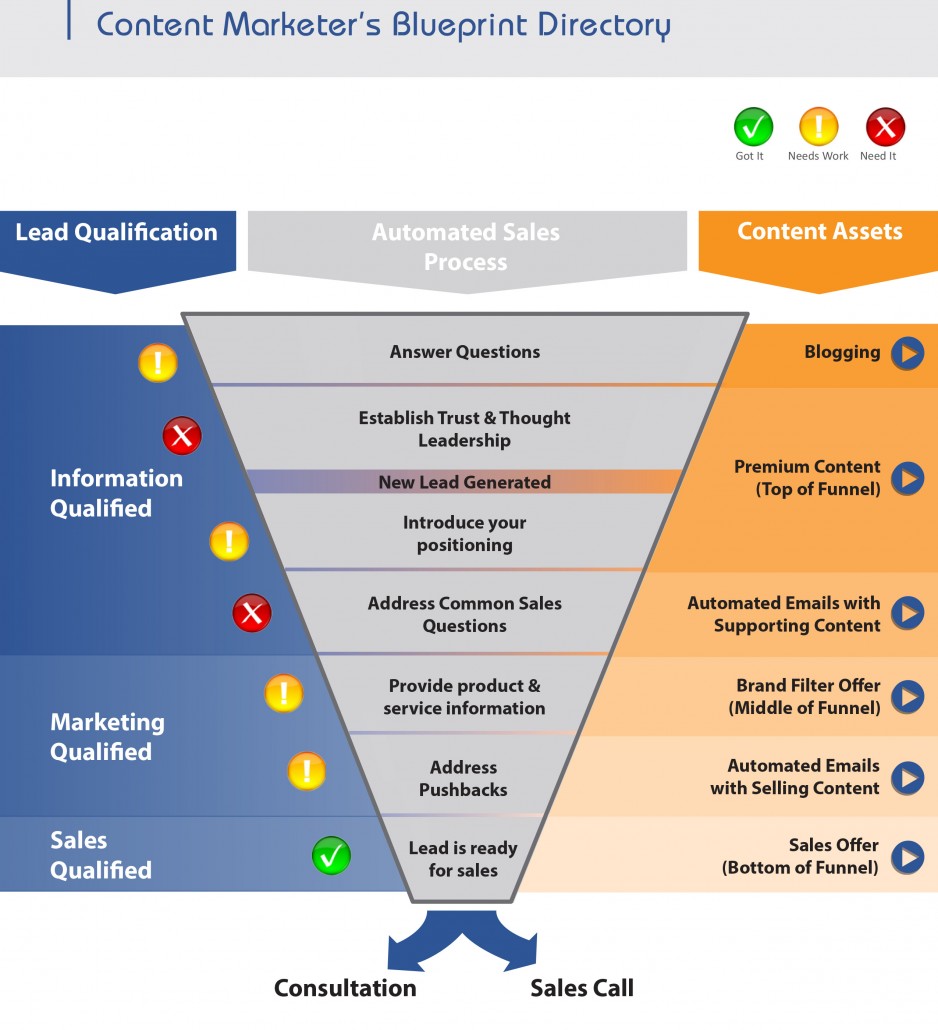
Third: Create Your Inbound Marketing Strategy
Looking at sales and marketing in a one-transaction-at-a-time mindset, is a tired method. Consumers are much more savvy, and they have information at their fingertips. The more attention you can pay to them, and the more customized their experience can be, the happier they’re going to be, and the better we’ll all do.
- Attract: Ideal Customers
Attract your buyer personas with content focused on their particular goals, challenges, pain points, objections & demographic information. - Convert: Visitors to Leads
Convert by gathering visitors contact information and in-return offering them valuable & resourceful information that each buyer persona is seeking. - Close: Leads into Customers
Close through transforming leads into customers with automated marketing tools & systems that mirror your sales process. - Delight: Provide Remarkable Content
Delight visitors, leads & existing customers with focused content continuously to turn them into advocates for your brands product and/or service.
Build Value From Day 1
One benefit of inbound marketing is it largely automates your sales process. It drip-feeds useful content and useful information to your prospects, on autopilot. It does this at the stage that they’re ready to receive it at. If you have a prospect who needs a lot of information before they even decide that they need to make a purchase decision, they digest a lot of content online, before they narrow it down to their buying decision.
This lends to a really active sales pipeline, with customers are working themselves towards the point-of-sale, down the funnel. So you can see those things, really fast, and a lot of times that speeds up the process. Because where a human salesperson might not be able to keep up with answering the questions, at each stage of a buying process, one-on-one with a customer, your website is always up.
The content automation that you are delivering to people, is useful, helpful content, answering all their questions. It can speed up the sales process. Also, your brand staying in front of the customer that many times, multiple touches, over a period of time, is going to speed that process up. Because, again, it’s really hard to call someone seven times, call every prospect that you have, seven times in two months. But it’s very easy to deploy a marketing funnel campaign, and have all those emails drip-feeding that content to them.
Fourth: Measure Effectiveness
According to Hubspot; Testing inbound efforts drives major ROI improvements: Companies who test are 75% more likely to show ROI for inbound marketing than those who fail to test their strategies.
If you take a look at why we have a website, in the first place, as a business, it’s basically to be a 24/7 sales person. The days where we could just pop up a brochure-style website, have it be static, and non-interactive, and just sort of leave it up, and have no new content published on it, and not be paying attention to what’s happening to it. Those days are gone. It’s 2014; we can’t afford, as business owners, to operate like it’s 2004, or 1994.You may as well not have a website, at that point, if it’s just going to sit there. This is meant to mirror the sales process. Effectiveness is measured by sales opportunities. So, in your inbound campaign, it looks like a funnel
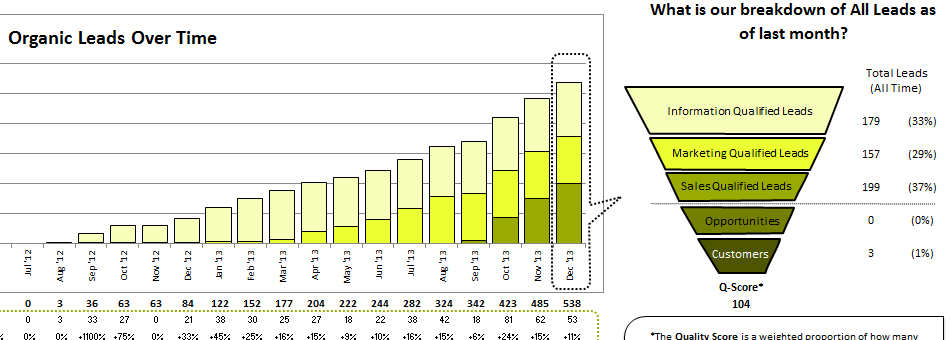
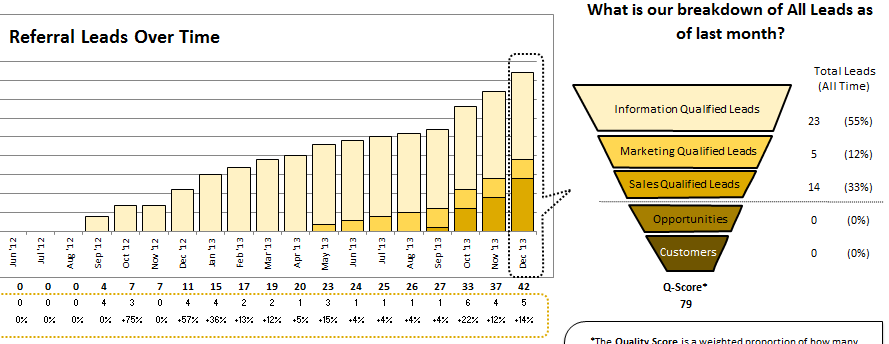
Inbound marketing is extremely effective, all the way down to the sales opportunity level. The importance should be taken away from the traffic, which is what most people would inherently be measuring, as an effectiveness measurement, like a KPI. That’s a really arbitrary metric, today. You need traffic to generate leads, but, if you’re generating the traffic, alone, and you’re not paying attention to what happens between them, that’s where the opportunity is missed. There’s a gap there. Effectiveness should be a measurement towards the bottom of the funnel.
Conclusion
Embrace inbound marketing. For the cost, it’s really reasonable, for the return that you get. There are a lot of bigger companies out there, that pay a lot of money to get this type of user-behavior data. Some big, big brands pay millions of dollars for the user data, and their buying behavior data. Now, as business owners, we have the tools and the technology, to build the same thing, using inbound marketing, and map that buyers’ process. The happier we can make our prospects, the more people we can help. And that equates to a quickly reforming campaign with high ROI and consequently more sales.
Are you a marketer using inbound tactics to mirror your sales process? Share your comments below.
Get PageLadder Posts by Email
Robb Bailey
Latest posts by Robb Bailey (see all)
- 5 Reasons You Need to Look Beyond the Numbers in Your Digital Marketing - July 18, 2019
- 5 Easy Tweaks You Can Make to Consistently Land New Customers Online - July 18, 2019
- Types of Marketing Emails That Nobody Has Opened in Year - July 18, 2019

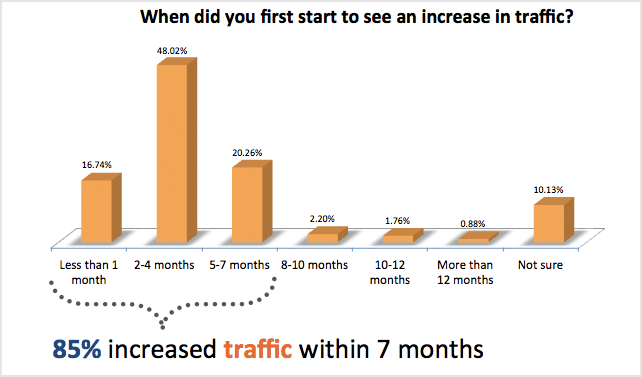

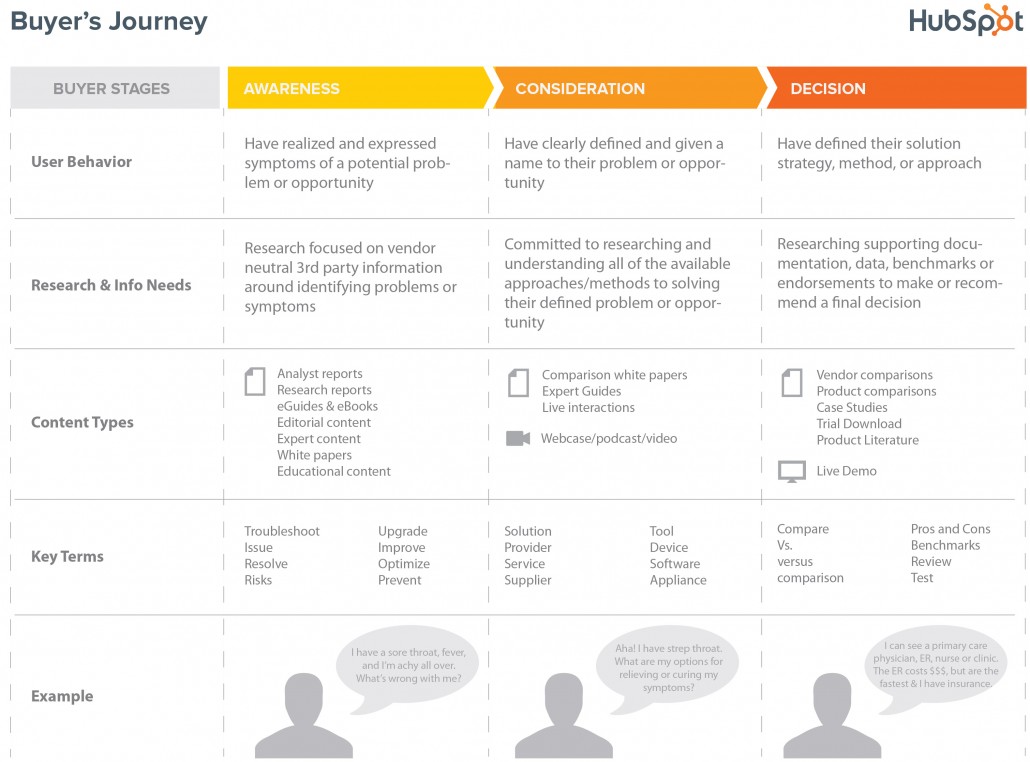
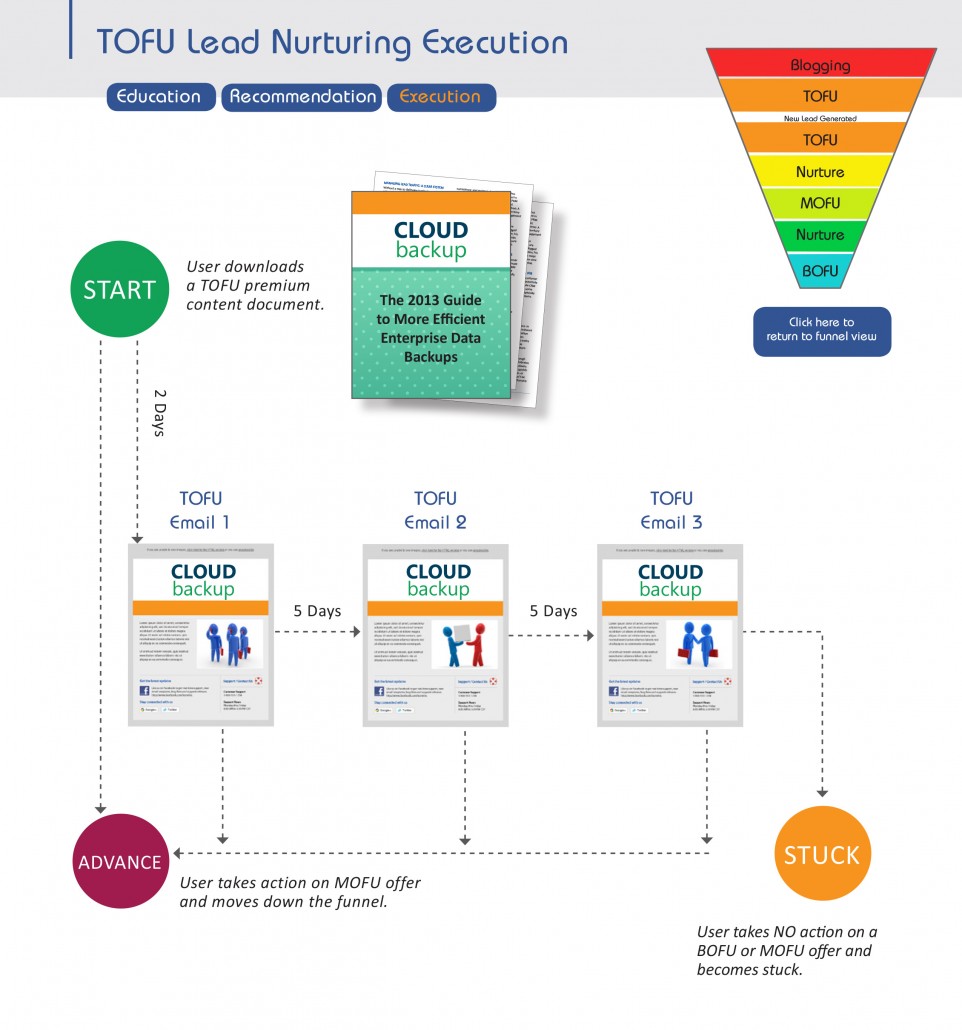
Leave a Reply
Want to join the discussion?Feel free to contribute!